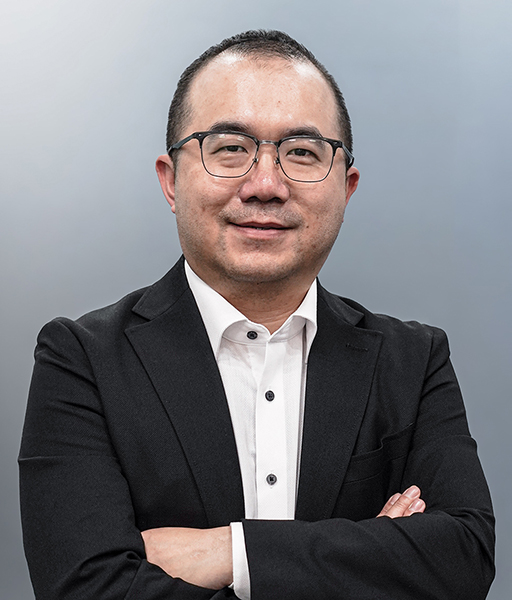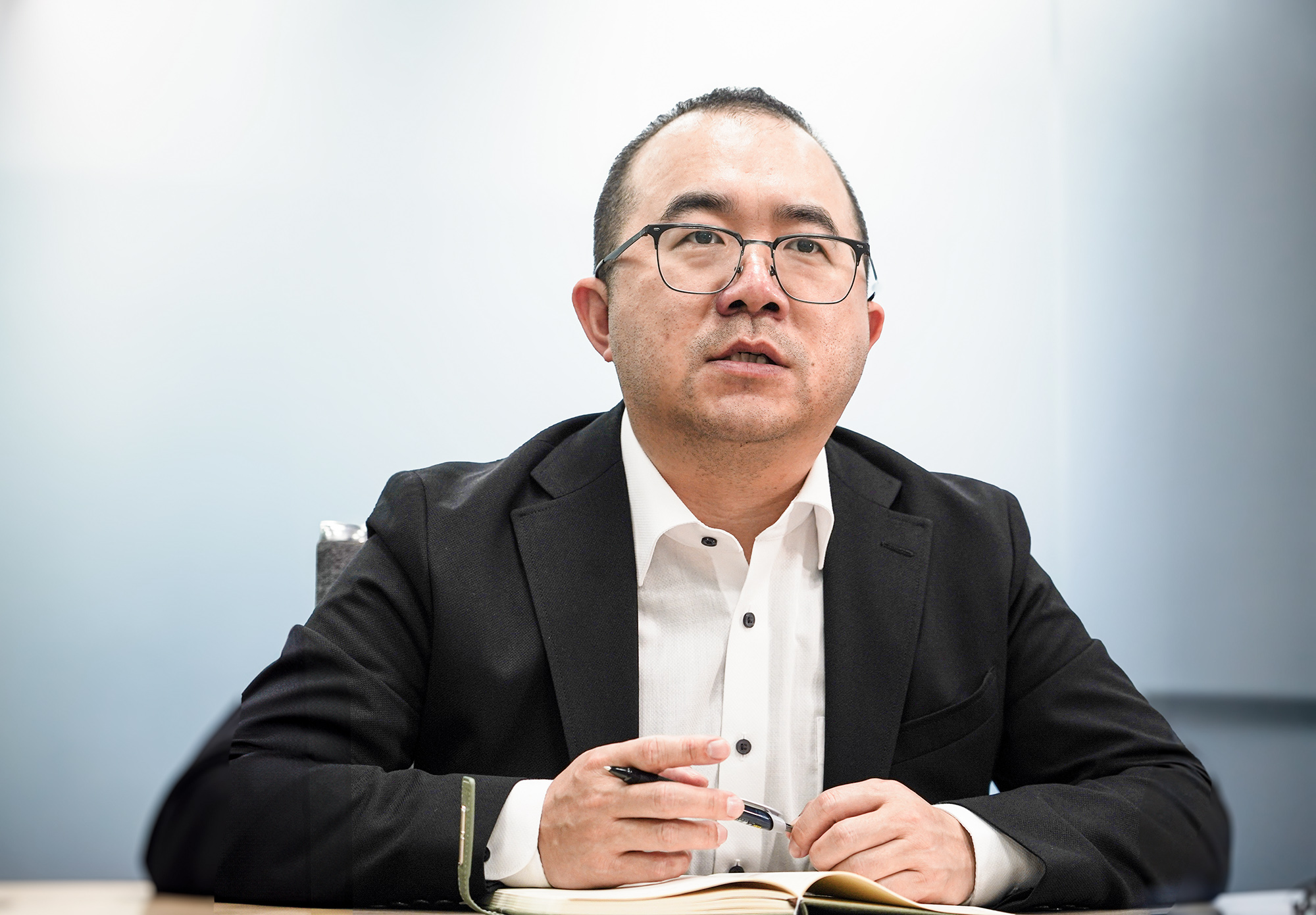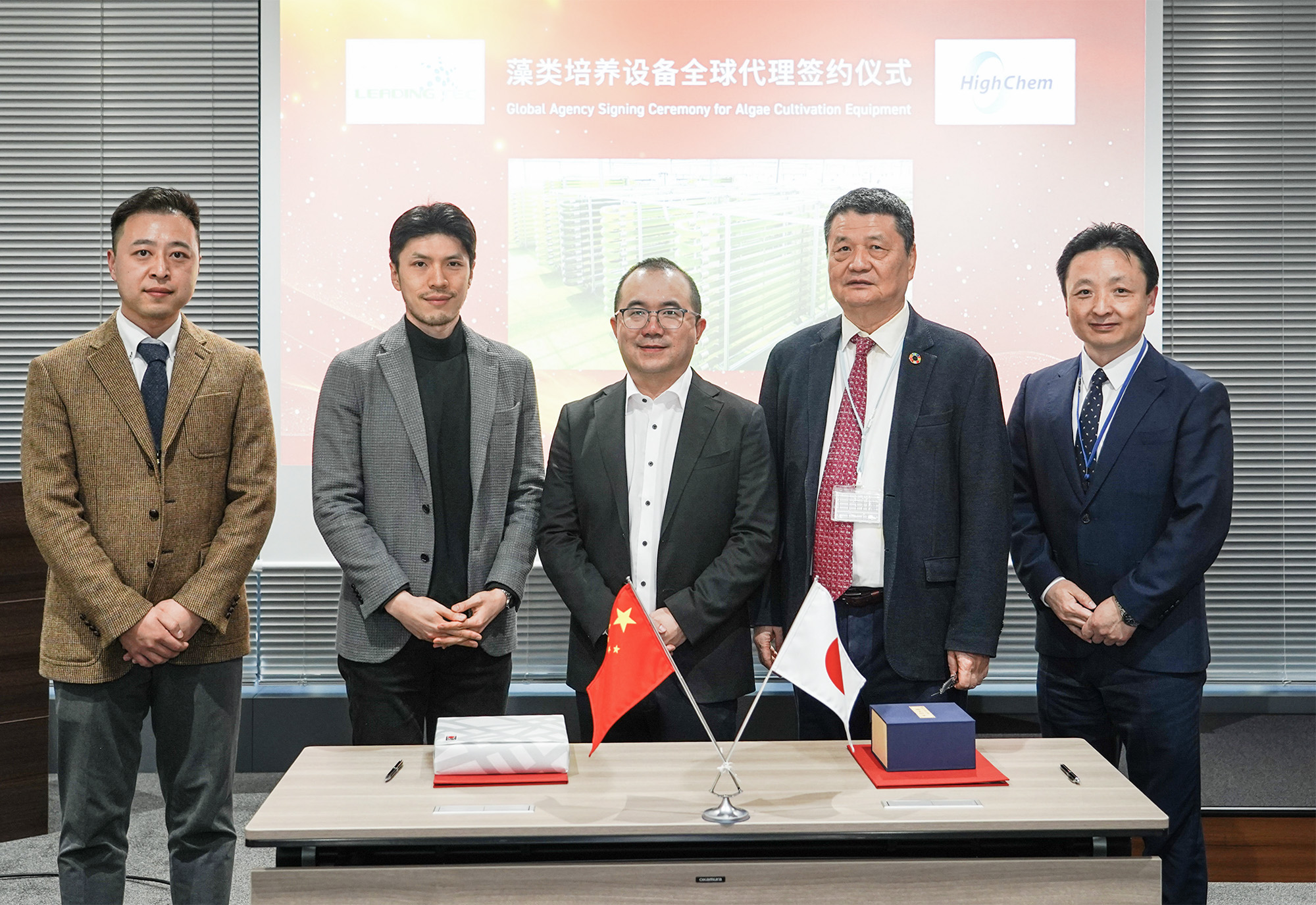
[China Biotech Feature] Can Algae Save the World!?
In this interview, we spoke with Mr. Ni Liangping, CEO of Guangyu BioTech Co., Ltd., an innovative biotechnology company in China with which we have formed a strategic partnership. Mr. Ni shared insights on the potential of microalgae and the advanced technology, "Photobioreactors," that makes industrial applications of microalgae a reality.
Guangyu BioTech Co., Ltd. CEO, Ni Liangping
Profile
CEO of Guangyu BioTech Co., Ltd.
Born in December 1983, Mr. Ni Liangping specialized in aquaculture and algae research at Shanghai Fisheries University. After graduating in 2006, he energetically expanded his career as an entrepreneur, founding six companies in the fields of home appliances and LED-related materials. In 2012, he founded Guangyu BioTech, his sixth company, and has since expanded the business globally.

Focusing on the Infinite Potential of "Microalgae" and Founding Guangyu BioTech

── Could you share why you founded Guangyu BioTech and started the business of manufacturing and selling photobioreactor equipment?
After graduating from Shanghai Fisheries University in 2006, I founded six companies in just six years, energetically expanding my business. During this time, I engaged in various businesses, such as sales of home appliance components, manufacturing and selling LED materials, and trade, establishing relationships with global suppliers from Japan, the US, and Europe.
This international business experience and network have become the foundation of Guangyu BioTech. The photobioreactor equipment manufacturing and sales business, initially started as a small-scale project, was established as a core business in 2012 and became my sixth entrepreneurial venture.
── Why did you become interested in the field of microalgae cultivation?
I wanted to discover the inherent potential of "light." One of my key research topics was "How to convert LED light energy into useful biological energy." And the discovery was the infinite potential of "microalgae."
In aquaculture, microalgae are at the base of the aquatic food chain pyramid, serving as an important producer that can absorb solar energy. Microalgae support the aquatic ecosystem fundamentally by becoming food for animal plankton and fish. Additionally, I noticed that the photosynthesis efficiency of microalgae is extremely high. Their excellent photosynthesis efficiency allows them to produce proteins and other nutrients at low cost and efficiently. They are not only primary producers in the aquatic food chain but also have wide-ranging applications in bioenergy, CO2 reduction, environmental improvement, and even biopharmaceuticals. In other words, the creation of valuable organic materials using "light energy and CO2" is the reason I founded Guangyu BioTech.
── Could you share an overview of Guangyu BioTech’s business?
Our company provides comprehensive solutions for the industrial applications of microalgae. Specifically, we are currently developing three main businesses. The first is providing high-quality seedlings for use in photobioreactors. The second is offering cultivation equipment for microalgae, represented by photobioreactors. Lastly, we offer technical services and support for talent development.
The Scope of Microalgae’s Role: From Aquaculture to Human Nutrition and Carbon Neutrality

── What is a "photobioreactor"?
A "photobioreactor" is a device used to cultivate microalgae through photosynthesis, using light and CO2. In this system, light energy is used as the input energy, and CO2 and water are used as raw materials. These materials are absorbed by the microalgae cells, where they are processed into "organic matter" and "oxygen." When we understand these processes as part of the production cycle, we can say that the photobioreactor is an excellent device designed to produce these processes efficiently and stably. Particularly, by adopting a sealed structure made of glass or special resin, we prevent external contamination and maintain an optimal cultivation environment. These features enable the efficient production of microalgae, which was previously difficult to cultivate on a large scale.
── I heard that the photobioreactor has potential for use in various fields. Could you share the industries, products, and services where its application is expected?
The first field where we expect significant use is in aquaculture. Microalgae serve as high-quality early-stage feed for juvenile fish and also function as water quality regulators. A specific success case involves a large-scale shrimp farming operation in China. Shrimp larvae raised on microalgae were sold at prices approximately five times higher than those raised on conventional feed, providing a clear advantage to customers. Additionally, algae increase dissolved oxygen in water and help reduce ammonia nitrogen and nitrite levels, improving water quality.
The second area is in the development of nutritional supplements. Microalgae are being processed into tablets and powders for use as food additives and are gaining attention as a high-quality protein source. Especially in the Middle East and Europe, they are expected to be used as a protein source for vegetarians.
The third area is the use of microalgae for carbon neutrality. Energy and chemical companies emit large amounts of CO2, and one way to tackle this is by utilizing CO2 as a raw material for algae cultivation. This approach not only reduces CO2 but also creates added value through algae cultivation, which can contribute to reducing environmental impact while generating economic value. In particular, in the Chinese market, the balance of profitability and environmental contribution is highly valued, and algae cultivation, which achieves this balance, is considered an ideal solution for achieving carbon neutrality.
Furthermore, algae cultivation is also expected to be used for advanced materials such as bioplastics, chemical raw materials, biofuels, building materials, pharmaceutical carriers, and nanomaterials.
However, in the short term, the scope of product deployment will depend on how downstream customers benefit from it. Over the next two to three years, in China, the three major applications of microalgae are expected to be in fertilizers, carbon neutrality, and nutrition sources.
The strengths of utilizing China’s supply chain include cost competitiveness and the ability to offer comprehensive solutions.

── What are the advantages of your products compared to those of other companies?
The first advantage is the provision of high-quality, cost-competitive photobioreactor equipment by fully utilizing China’s advanced supply chain. From hardware such as glass tubes, pumps, and control systems to control software, we achieve excellent cost performance by leveraging China’s manufacturing base.
The second advantage is our ability to provide comprehensive solutions. We do not just sell equipment; based on our advanced research and development capabilities, we offer customized solutions based on customer needs, ranging from algae species selection to optimizing manufacturing processes. Specifically, for research and development purposes, we enhance functionality through advanced sensors and structural customization, while for mass production purposes, we achieve efficiency by optimizing necessary functions, providing systems tailored to each purpose.
By leveraging these strengths, we maximize the return on investment for our customers’ entire facilities and support the realization of a guaranteed return on investment.

── What do you expect from HighChem in relation to the sales agency agreement?
Our company has excellent technological capabilities that contribute to solving environmental issues, but our business scale alone had limitations for global expansion. With HighChem’s global sales network and strong customer base in the energy and chemical industries, we hope to accelerate the global expansion of our environmental solutions utilizing photobioreactor technology.
These are the next sections translated in the requested format. Let me know if you'd like further sections translated!

